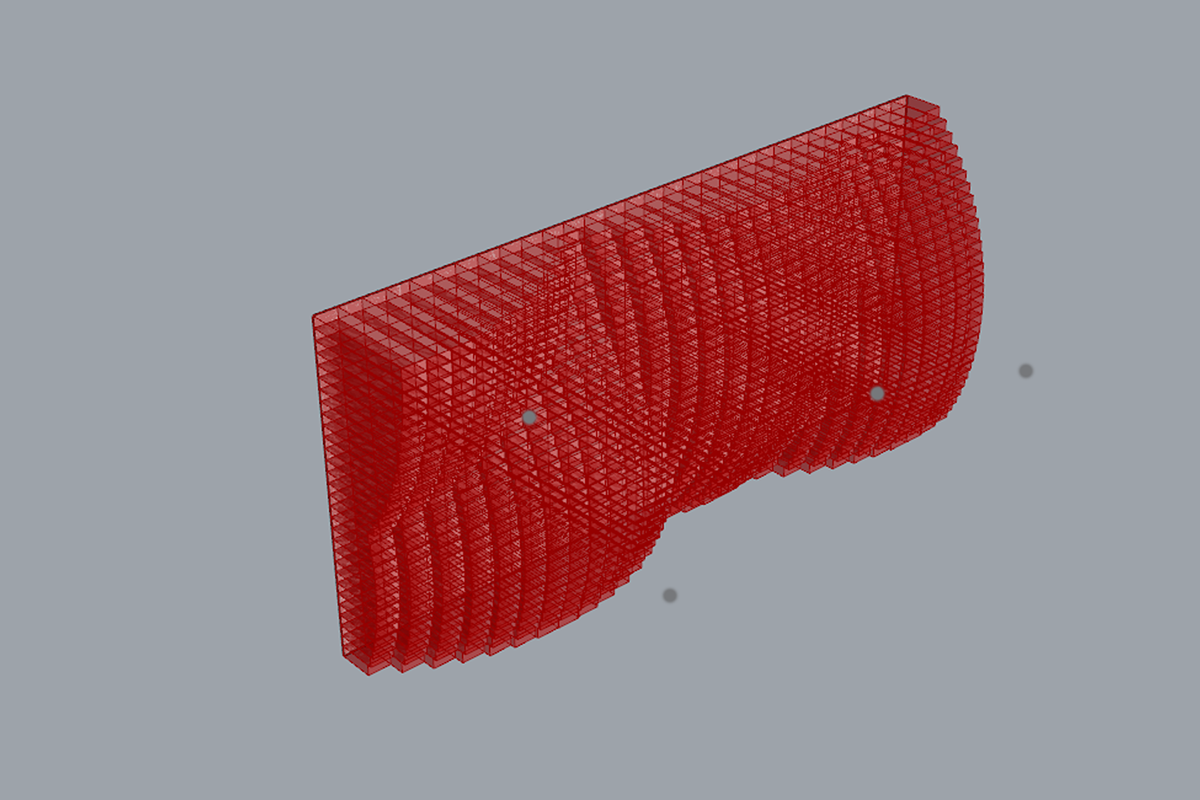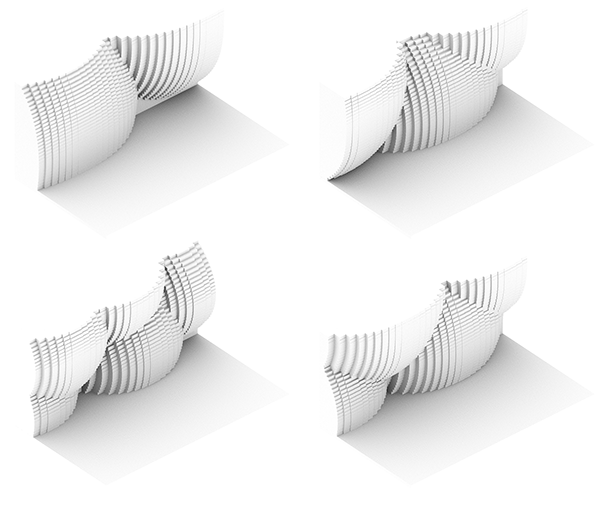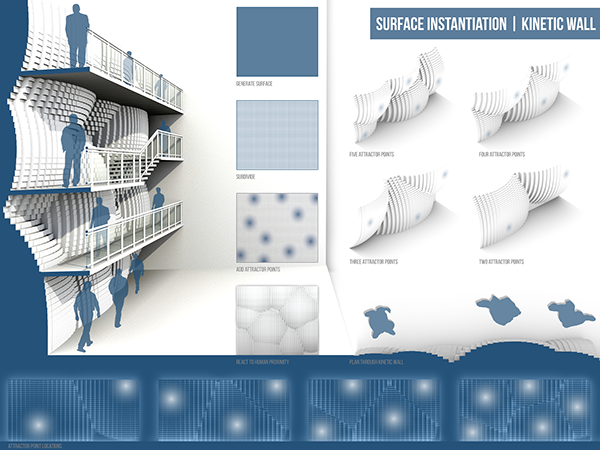
My first attempt at developing a kinetic wall included a single attractor point, representing one person walking along the wall. Although the definition began to perform as I intended, I wanted to include more points, simulating multiple people moving along the wall. The first definition is shown below.


Different iterations of the one attractor point definition

Eventually, I got the wall to work with multiple attractor points, representing multiple people. In the image above for example, I used four points. This made more sense to me because I imagined this type of installation located within a public building where many people would be circulating simultaneously. The issue was how far the subdivided faces extruded into the space. In the iteration above, the panels would extend too far, reducing the usable space in the building. The updated definition is below.


Above are a few iterations of the updated definition with different quantities of attractor points. Clockwise starting in the top left, I used two, three, four, and five points.

After successfully implementing five attractor points, I felt ambitious and tried using ten points. This made the kinetic wall more believable, considering both the amount of people within a public building and the length of extrusion into the space. The definition is largely the same as the previous one except for the amount of points.


Elevation of the wall with ten attractor points

Final board, showing the programmatic application of the kinetic wall and its response to human proximity as well as a simplified creation process, iterations using different quantities of points, and a plan view responding to nearby people




